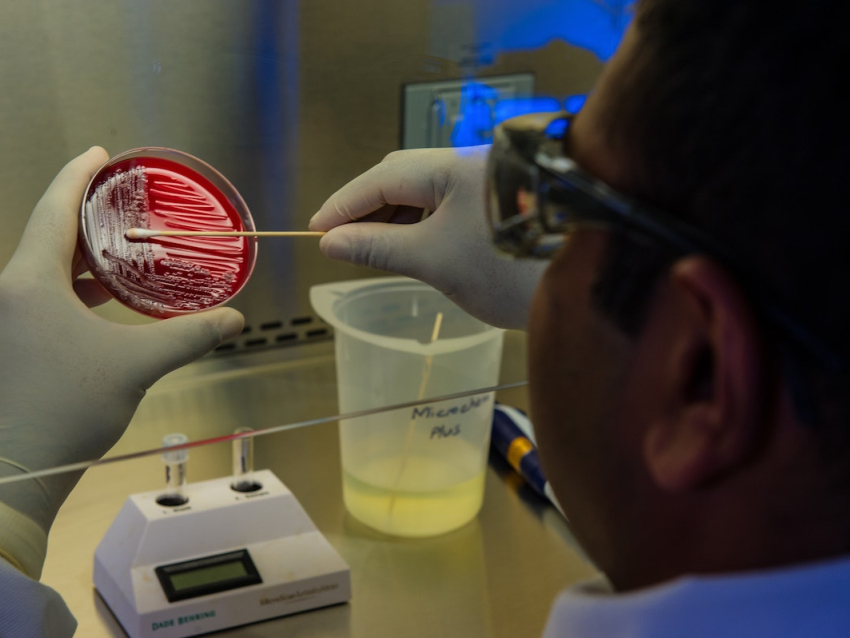
Research Highlight: A a novel approach in the development of new antibiotics directed against the bacterium that causes tuberculosis (TB)
The College of Pharmacy Monthly Research Publication Highlight features a novel approach in the development of new antibiotics directed against the bacterium that causes tuberculosis (TB).
The UK College of Pharmacy Research Publication Highlight for June, 2016 was published in Organic and Biomolecular Chemistry and is titled “A biocatalytic approach to capuramycin analogues by exploiting a substrate permissive N-transacylase CapW”.
The project was conducted in the laboratory of Dr. Steven Van Lanen in the Pharmaceutical Sciences Department in the UK College of Pharmacy in collaboration with investigators at the Peking Medical Union College in Beijing, China and Daiichi-Sankyo Company, Japan. The lead author on the study is postdoctoral fellow, Xiaodong Liu. Graduate students Wenlong Cai and Anwesha Goswami in the Van Lanen lab and Keith Green, a scientist in Sylvie Garneau-Tsodikova’s laboratory, also contributed to the project.
Antibiotic resistance is a global health threat that has resulted in the reemergence of a number of infectious diseases that were once considered rare and easily treatable. The development of new and better antibiotics to combat drug-resistant strains of pathogenic microorganisms is paramount in the fight against infectious diseases, including TB. Most antibiotics are natural products, compounds that are synthesized in plants, microbes, and other organisms that help them thrive in their native environments. The Van Lanen laboratory uses natural product chemistry to search for new, and develop better, antimicrobial compounds in their effort to find new drugs for the treatment of TB and other infectious diseases. Capuramycin is a relatively new natural product that has antimicrobial activity towards the mycobacterium that causes TB. The team developed a strategy that utilizes the enzyme CapW to generate 43 new analogs. Several of these new compounds demonstrated better antimicrobial activity than capuramycin itself, suggesting they may be useful in the treatment of TB. Studies are ongoing to further evaluate these promising new analogues as potential antimycobacterial agents.
